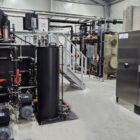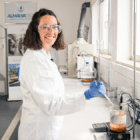Wastewater from bakeries belongs to the category of commercial and industrial wastewater and is primarily generated during the production and cleaning of equipment in bakeries. Due to its specific composition, which includes organic loads, fats, oils, flour residues, dough residues and cleaning agents, the treatment of this wastewater places special demands on water and wastewater technology. In industrial wastewater treatment, it is crucial to use suitable processes to treat the wastewater volumes efficiently and comply with environmental regulations.
Table of contents
Technical background
Wastewater from bakeries typically contains high quantities of organic substances, especially carbohydrates (flour, dough residues), fats and proteins. These ingredients lead to a high biochemical oxygen demand (BOD5), as the organic substances are microbially degraded and consume oxygen in the process. In addition, cleaning agents and fats/oils in wastewater can impair the cleaning process in municipal wastewater treatment plants, which is why pre-treatment is necessary.
Characteristic loads in wastewater from bakeries:
Organic loads:
- Flour and dough residues contain a high concentration of carbohydrates, which consume oxygen during their decomposition and increase the biochemical oxygen demand (BOD) in the wastewater.
- Fats and oils from baking oils or margarine can build up and cause blockages in the drainage system.
Fats and oils:
- Bakeries often use fats and oils in their production processes, which end up in the wastewater. These must be removed using grease separators to prevent them from being deposited in the wastewater pipes and impairing the efficiency of wastewater treatment.
Cleaning agents:
- The regular cleaning of ovens, dough machines and work surfaces leads to the introduction of chemicals and cleaning agents into the wastewater, which in turn can have an impact on the pH values and chemical composition of the wastewater. Neutralization or pre-treatment of these chemicals is often necessary.
Fluctuating wastewater volumes:
- The production peaks and cleaning processes in bakeries often cause highly fluctuating wastewater volumes, which must be taken into account in wastewater treatment.
Process for the treatment of waste water from bakeries
Various technical solutions are required to deal with the specific impurities in bakery wastewater. Typical treatment steps are
Mechanical pre-treatment:
- Screens or sieves are used to remove coarse solids such as dough residues and flour from the wastewater. These residues can disrupt the subsequent cleaning processes, which is why mechanical pre-cleaning is essential.
Grease separator:
- Grease separators play a crucial role in the removal of grease and oil from wastewater. Fats and oils are deposited on the surface of the wastewater and are separated in special grease separators before the wastewater is treated further. Regular maintenance and emptying of these separators is necessary to ensure efficient removal.
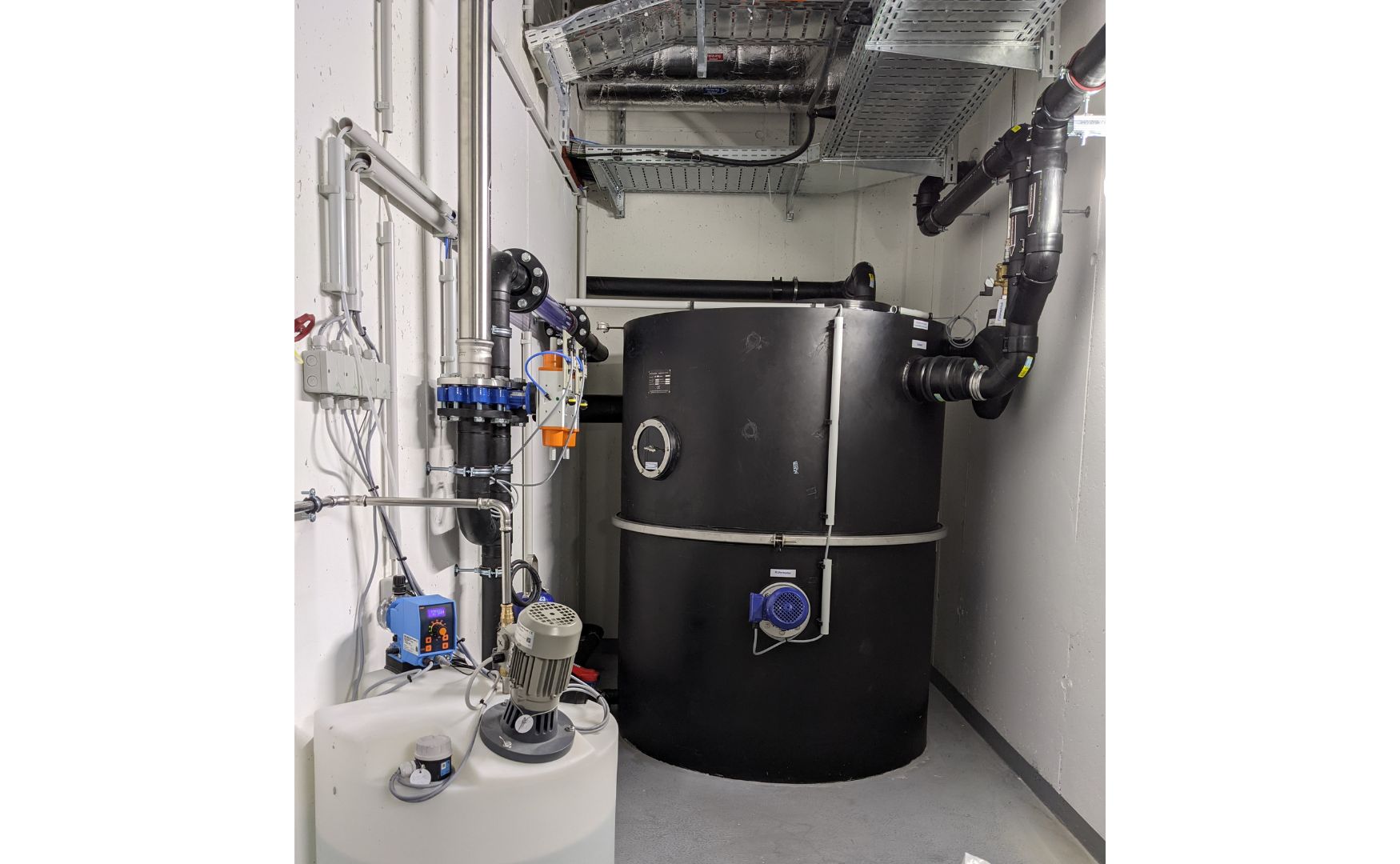
Photo: Photo of a grease trap installed above ground
3. biological treatment
- Biological processes such as the activated sludge process or moving bed biofilm reactors (MBBR) are used to reduce the organic load in wastewater. In the activated sludge process, the wastewater is mixed in an aerated tank with microorganisms that break down the organic substances. Together with the dissolved sludge, these microorganisms form the so-called activated sludge, which is then separated and partially returned to the process. This process is particularly suitable for treating wastewater with a high organic load, such as that found in bakeries.
- The Moving Bed Biofilm Reactor (MBBR) uses special plastic carriers on which biofilms of microorganisms colonize. These microorganisms break down the organic impurities in the wastewater while the water flows continuously through the reactor. Compared to the activated sludge process, the MBBR has the advantage that it requires less space and is less susceptible to fluctuations in the wastewater load.
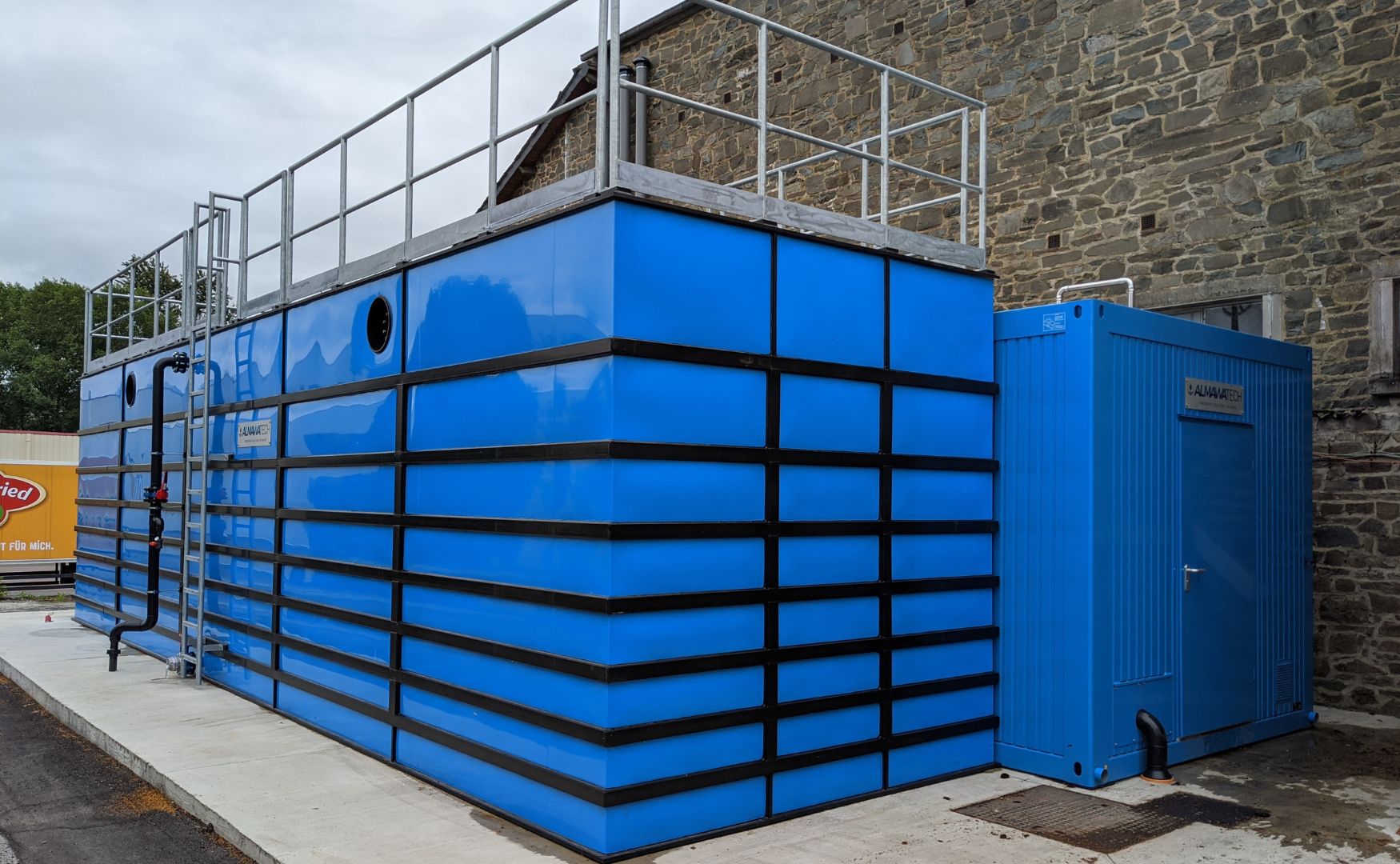
Photo: Compact MBBR reactor(ALMA BIO MBR) in modular container design(ALMA MODUL)
4. flotation plants
Another important step in the treatment of wastewater from bakeries is the use of flotation systems (product overview of flotation systems). Dissolved air flotation is a process in which fine air bubbles are introduced into the wastewater to bring suspended solids, fats and oils to the water surface, where they can be skimmed off or separated. This technique is particularly suitable for the separation of fats, oils and fine particles, which are frequently found in bakery wastewater.
In a flotation system, the wastewater is first saturated with compressed air. Releasing the pressure creates small air bubbles that attach themselves to the particles in the wastewater and propel them upwards. This process is also known as flotation and enables fast and efficient separation of particles that are difficult to remove.
One example of such a system is our ALMA NeoDAFwhich is able to efficiently treat even difficult wastewater streams with a high fat and dirt content. The use of flotation systems is particularly advantageous in bakeries with a high fat load, as the air bubble technology ensures effective fat separation.
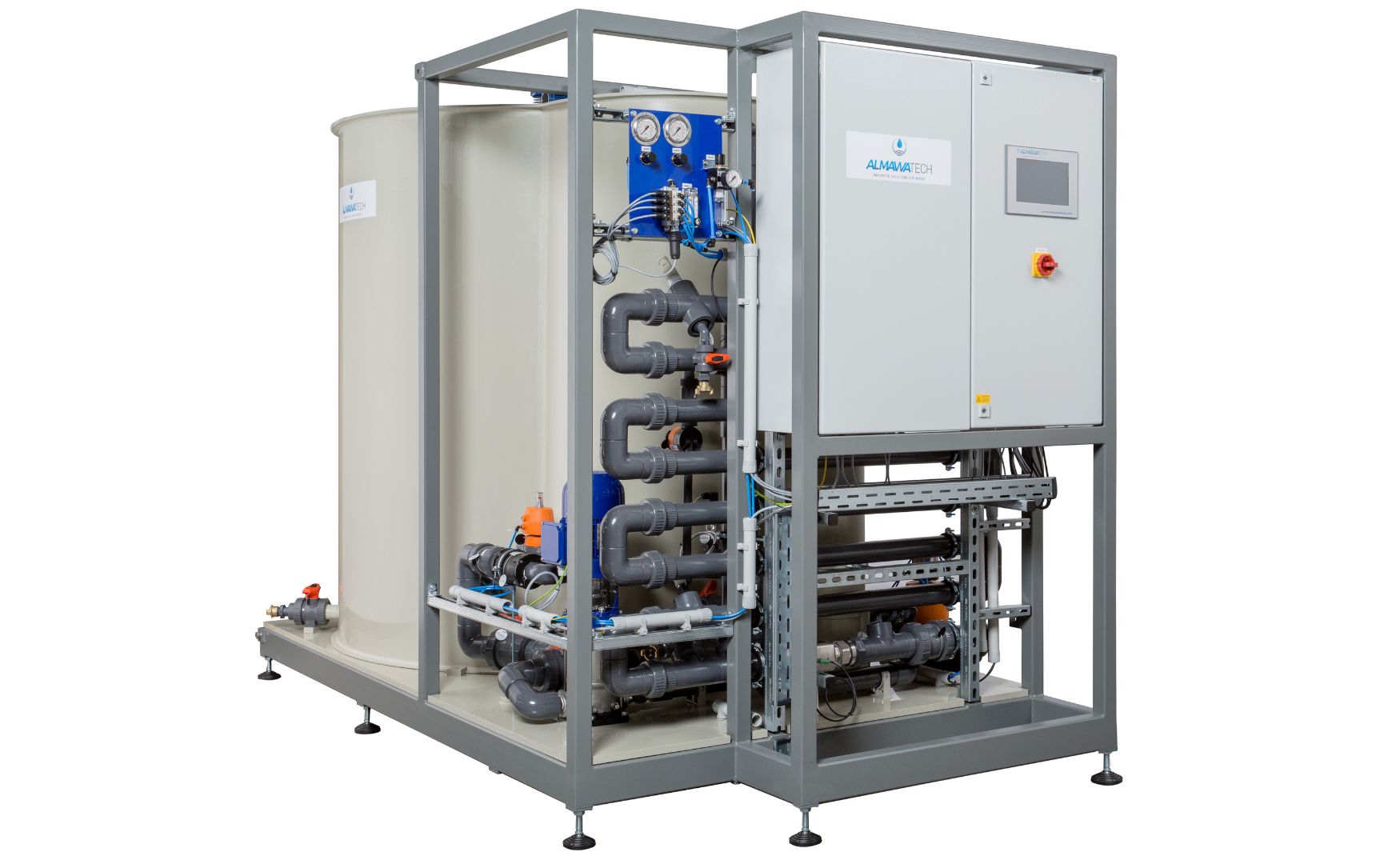
Photo: Compact ALMA NeoDAF HD flotation system with switchgear and automatic inline dosing for wastewater flows of up to 10 m3/h
5. membrane process
In cases where particularly high water quality is required or the wastewater is to be treated for water recycling, membrane processes such as reverse osmosis (product overview of reverse osmosis systems) are used. This technology efficiently removes dissolved solids, salts and micropollutants and enables the water to be reused in sensitive industrial processes.
However, a membrane process usually only makes sense after prior further purification in order to prevent the membranes from being overloaded by residual organic impurities and solids. Before reverse osmosis, technologies such as the activated sludge process or the moving bed biofilm reactor (MBBR) must therefore be used to reduce the organic load.
In many cases, our ALMA BHU BioFil technology, a biologically activated filtration system, is also suitable for removing low residual loads of organic substances. This minimizes the risk of biofouling and ensures the long-term economic operation of reverse osmosis systems.

Photo: Reverse osmosis system for in-house water recycling ALMA BHU BiosS-Treat
Disposal and reuse
After purification, the wastewater can either be discharged into the municipal wastewater system, provided the legal limits are met, or reused in closed circuits. Water recycling is being used in more and more companies to reduce water consumption and cut operating costs.
Legal requirements
Bakeries must comply with local regulations on wastewater discharge. In Germany, the Water Resources Act (WHG) and the Wastewater Ordinance (AbwV) regulate the limit values for the discharge of wastewater. Typical limit values relate to parameters such as BOD5, COD, pH value, fat content (lipophilic substances) and the content of suspended solids. It is important that bakeries comply with these values in order to avoid high fees or penalties and to protect the environment.
Conclusion
Due to its specific composition, which is rich in organic substances, fats and cleaning agents, wastewater from bakeries places special demands on wastewater treatment. A combination of mechanical pre-treatment, grease separation, biological and chemical treatment processes is necessary to clean the wastewater efficiently and comply with the legally prescribed limit values. Modern technologies such as membrane processes or biologically activated filtration(ALMA BioFil Compact) allow the purified water to be reused and contribute to sustainability in production.





